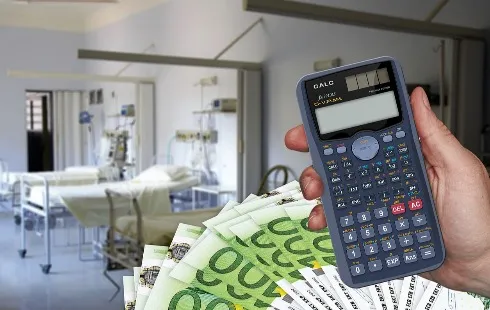
8HoursMining cloud mining platform, daily profits up to $9,337
Section: Business
The latest figures from the Federal Statistical Office reveal that Germany's economic growth stalled once again in the third quarter, highlighting persistent challenges facing Europe's largest economy. Adjusted for inflation, the country's gross domestic product (GDP) remained flat between July and September, failing to recover from a 0.2 percent contraction recorded in the preceding quarter.
This stagnation is largely attributed to weak export performance, with domestic production levels barely exceeding those seen in 2019, prior to the global pandemic. While other major European economies such as Spain and France have reported moderate GDP growth in the same period, Germany has struggled to regain momentum. Spain's GDP grew by 0.6 percent and France's by 0.5 percent, putting Germany at a relative disadvantage within the European Union.
Labor market indicators further highlight the economic slowdown. The number of employed persons in Germany decreased by 21,000 in September, marking the fifth consecutive month of decline. Between May and August, employment figures dropped by an average of 15,000 each month, signaling ongoing pressure on the labor sector.
Historically, Germany has experienced cyclical downturns that were typically followed by periods of robust recovery. However, the current phase stands out, as the nation's overall economic output has either declined or stagnated in ten of the last twelve quarters. This prolonged period of stagnation is unprecedented for the country, with the divergence between Germany and key global competitors continuing to widen. For example, over the same period, the United States saw its economic output rise by 13 percent, and Poland by 15 percent.
The automotive sector, once a cornerstone of German industry, reflects this trend. According to industry analyses, Germany has fallen from the top spot to fourth place in global car exports over the past eight years, while China has surged ahead to claim first place.
Economists and government officials have identified the need for structural reforms to address these persistent challenges. Policy recommendations include reforming social systems, reducing regulatory burdens, strengthening supply chain resilience, expanding the labor force, and ensuring sustainable public finances. Despite these calls for action, experts remain cautious about the prospects for a substantial economic turnaround in the near future.
Recent optimism following the formation of a new government has faded. Economic sentiment among businesses and consumers improved briefly in mid-July, with some forecasting a potential GDP increase of 0.8 percent for the third quarter. However, subsequent data and forecasts have trended downward.
Industry performance has added to the concerns. In August, industrial production saw a significant decline, and new orders in the manufacturing sector dropped for the fourth consecutive month, reaching their lowest level since early 2010, excluding the pandemic-affected period in 2020. Consumer confidence also remains subdued, as households continue to prioritize savings over spending.
Early indicators suggest that the economic cooling has persisted into the autumn. The economic barometer from the German Institute for Economic Research fell from 96 to just over 91 points in October, moving further away from the neutral 100-point level that indicates average growth. Contributing factors include ongoing trade tensions with the United States, strong competition from China, and a sluggish global economic environment. Additionally, uncertainty remains regarding the government's ability to implement promised reforms, casting doubt on the likelihood of a swift economic recovery.

Section: Business

Section: Arts

Section: Politics

Section: Health Insurance

Section: News

Section: News

Section: News

Section: Arts

Section: News

Section: Arts
Health Insurance in Germany is compulsory and sometimes complicated, not to mention expensive. As an expat, you are required to navigate this landscape within weeks of arriving, so check our FAQ on PKV. For our guide on resources and access to agents who can give you a competitive quote, try our PKV Cost comparison tool.
Germany is famous for its medical expertise and extensive number of hospitals and clinics. See this comprehensive directory of hospitals and clinics across the country, complete with links to their websites, addresses, contact info, and specializations/services.
Curated by Fried Dähn and Thomas Maos, this event is part of the Sonic Visions series, featuring an engaging performance that intertwines sound, music, and visuals. This edition presents THE WATS, a narrative where three travelers in the desolate, apocalyptic landscapes of New Zealand encounter a...



No comments yet. Be the first to comment!